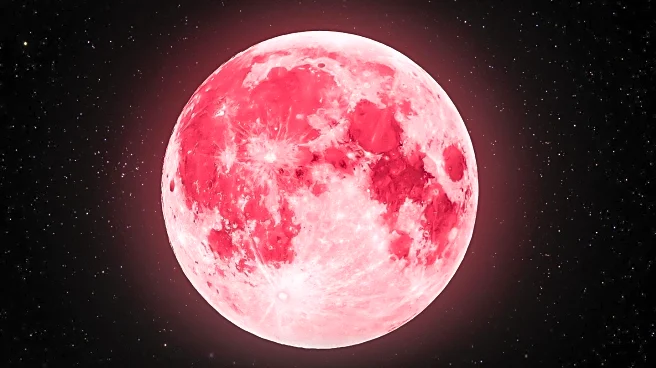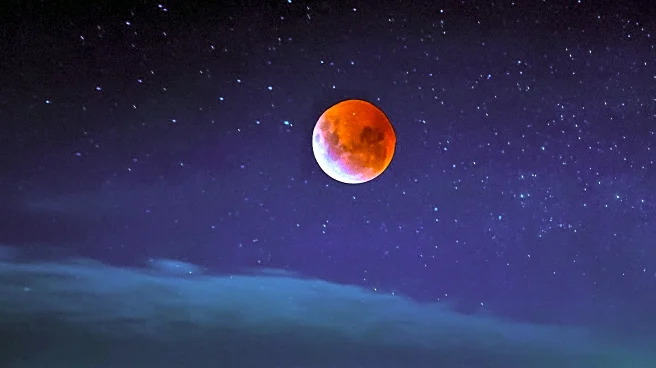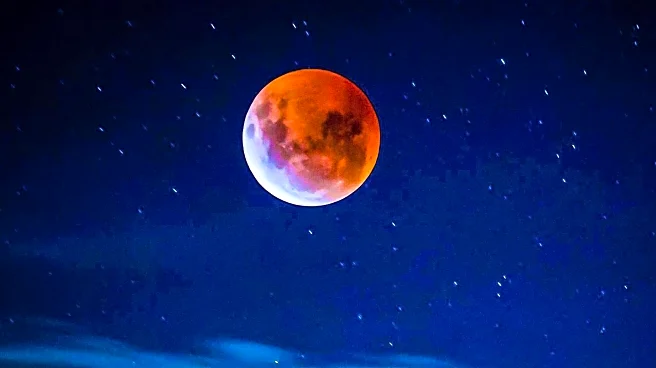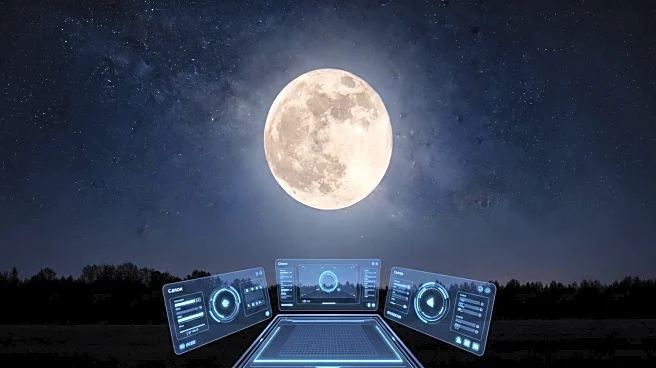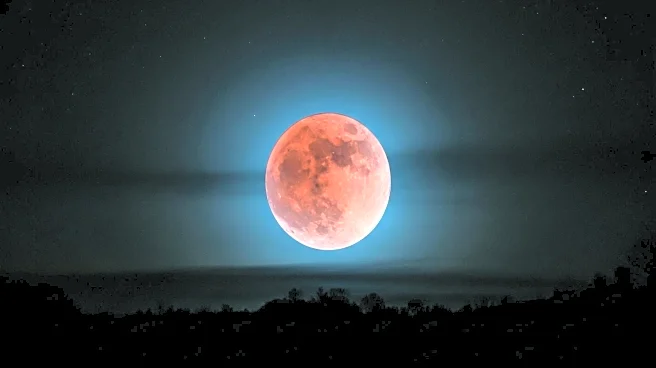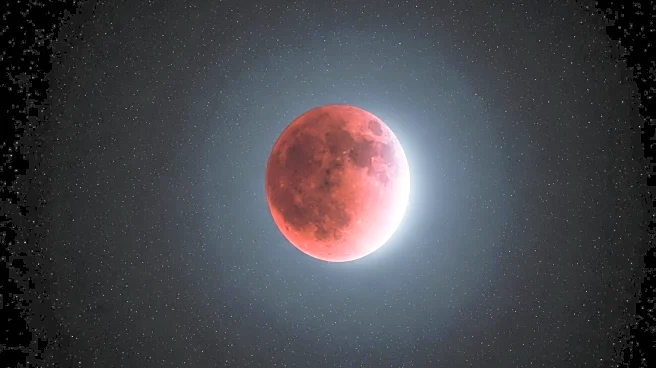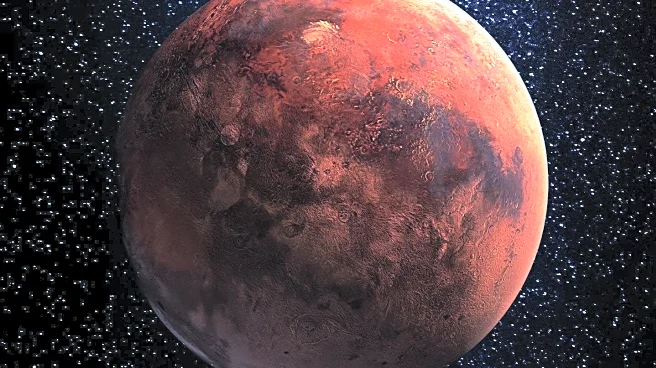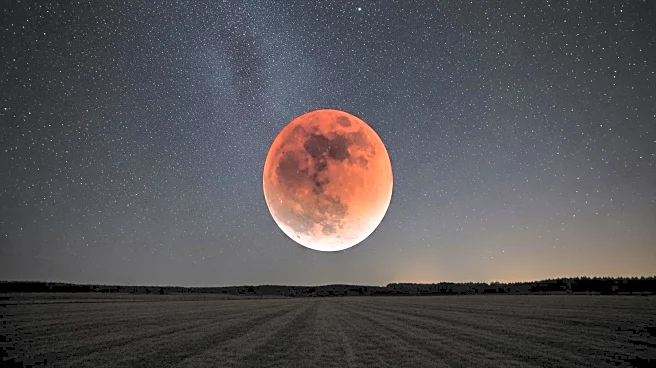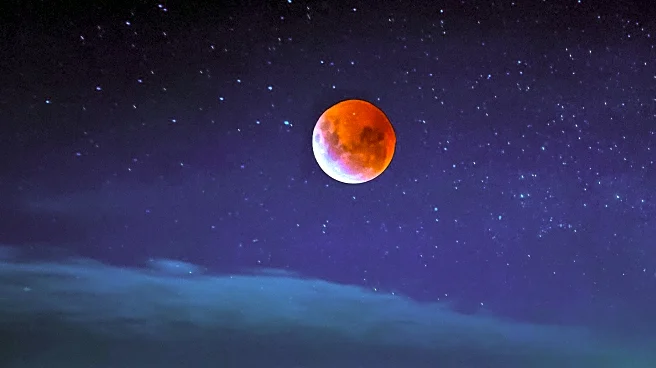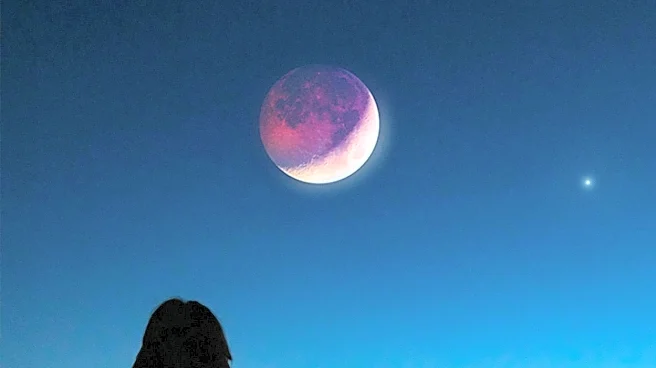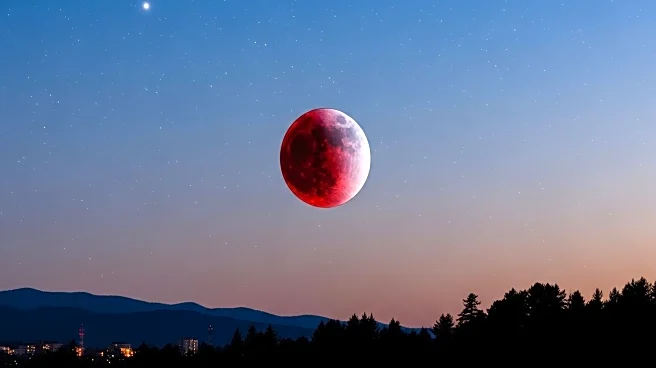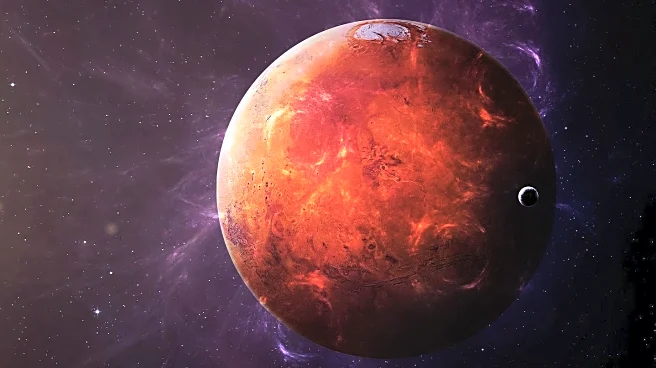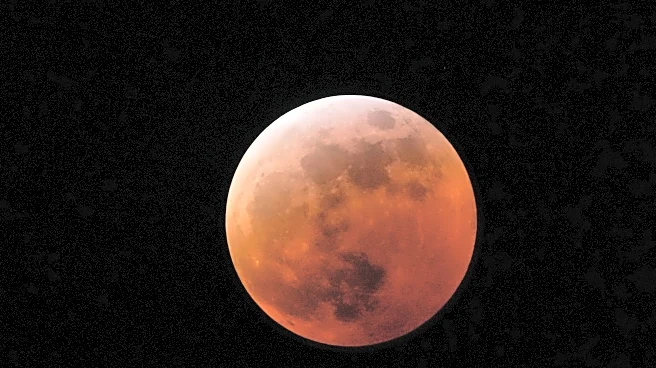What is the story about?
What's Happening?
A rare blood moon lunar eclipse is set to occur on September 7, offering a spectacular view for sky watchers across Asia and Western Australia. This celestial event, which will not be visible from North or South America, involves the Earth aligning between the Moon and the Sun, causing the Moon to appear red due to the scattering of blue light by Earth's atmosphere. The eclipse will last for over five hours, with 82 minutes of totality. While total lunar eclipses are relatively rare, occurring about once every two and a half years in the same location, this event provides a unique opportunity for those in the path to witness the phenomenon.
Why It's Important?
The blood moon lunar eclipse is significant for astronomy enthusiasts and the general public alike, as it offers a chance to observe a rare and beautiful natural event. Such eclipses can inspire interest in space and science, encouraging educational activities and discussions about celestial mechanics. The event also highlights the interconnectedness of Earth's atmosphere and celestial bodies, providing a visual representation of scientific principles. For regions where the eclipse is visible, it can boost tourism and local economies as people travel to witness the spectacle.
What's Next?
For those unable to view the eclipse directly, online platforms like the Virtual Telescope Project will provide live streams, allowing global audiences to experience the event. Looking ahead, the next total lunar eclipse visible in North America is expected on March 3, 2026, followed by a partial eclipse later that year. These future events will continue to engage and educate the public about astronomy and the wonders of the night sky.
AI Generated Content
Do you find this article useful?
